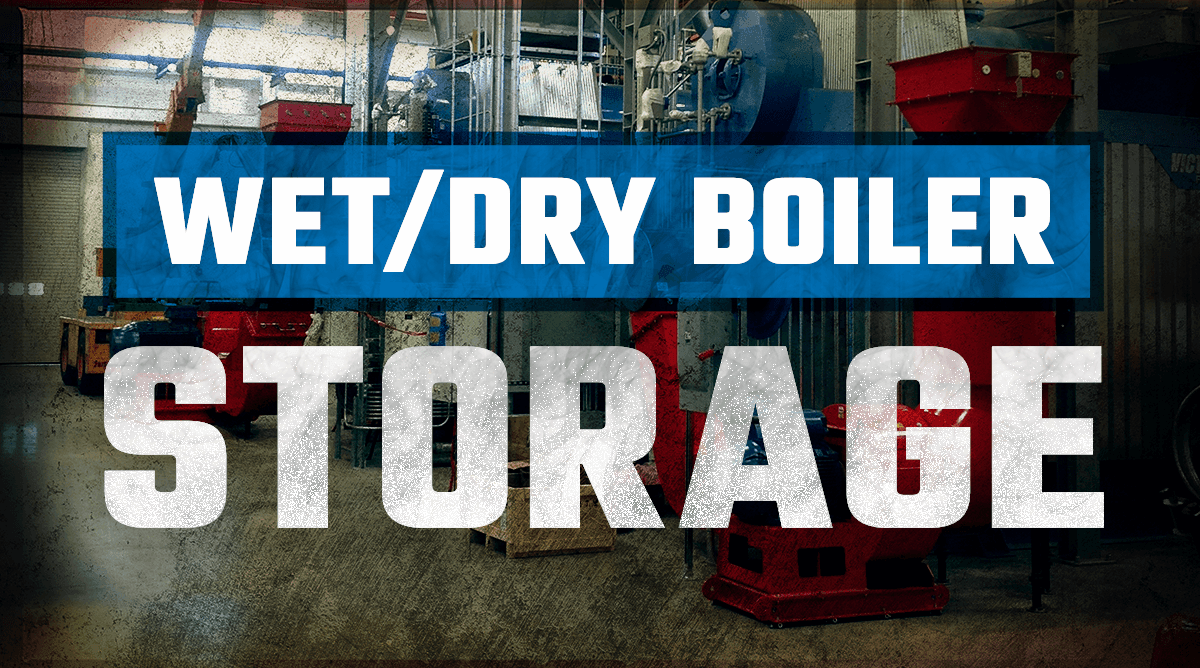Believe it or not, boiler storage can make a considerable difference in the overall lifespan of your boiler. Proper storage reduces the risk of corrosion as well as maintenance costs throughout the life of your boiler. There are two common ways to store your boiler when you take it offline, wet boiler storage and dry storage – also known as wet lay-up and dry lay-up.
Q: When should you “lay-up” your boiler?
A: Simply put, when you take your boiler offline for an extended period of time.
Q: Do I need to preform wet lay-up or dry layup on my boiler?
A: There are several factors that play into the decision to preform wet lay-up or dry lay-up. Boiler size, boiler style, the length of the time the boiler will be offline, the temperature where the boiler is stored are all factors that should be considered. In general, if the boiler is going to be offline for a longer period of time, dry lay-up is more appropriate. If the boiler is going offline for a shorter period of time and needs to have a faster response time in start-up, wet lay-up is more appropriate. If the temperature of the storage location of the boiler is below freezing dry storage is best. Dry storage requires less maintenance and requires little to no monitoring.
Q: How do you preform dry lay-up?
A: The following steps should be considered while preforming dry lay-up: 1. Cool the water to below atmospheric boiling point but not lower than 180 degrees F. 2. Flush the boiler and inspect to determine if any repairs are necessary. 3. Thoroughly clean and dry all wetted areas of the boiler. 4. Add moisture absorbing material such as silica or quick lime. 5. In high moisture areas an oil based treatment may be necessary, consult a boiler specialist to determine if oil based treatment is needed.
Q: How do you preform wet lay-up?
A: The following steps should be considered while preforming wet lay-up: 1. Cool the water to below atmospheric boiling point but not lower than 180 degrees F. 2. Flush the boiler and inspect to determine if any repairs are necessary. 3. Thoroughly clean and dry all wetted areas of the boiler. 4. The clean, empty boiler should then be filled to the top with water that has been chemically treated to minimize corrosion during standby. 5. Keep water pressure above atmospheric 6. Add caustic soda and sulfite until water levels reach 450 ppm. 7. Close drains and vents – the boiler can now be filled with clean service water, provided it is treated with hydrazine and volatile alkali. 8. The boiler should then be circulated to prevent chemicals from falling out of the solution. Storing your boiler properly is critically important to the life of your boiler.
For more information on how to properly store and maintain your boiler, reach out to a WARE boiler specialist today.
